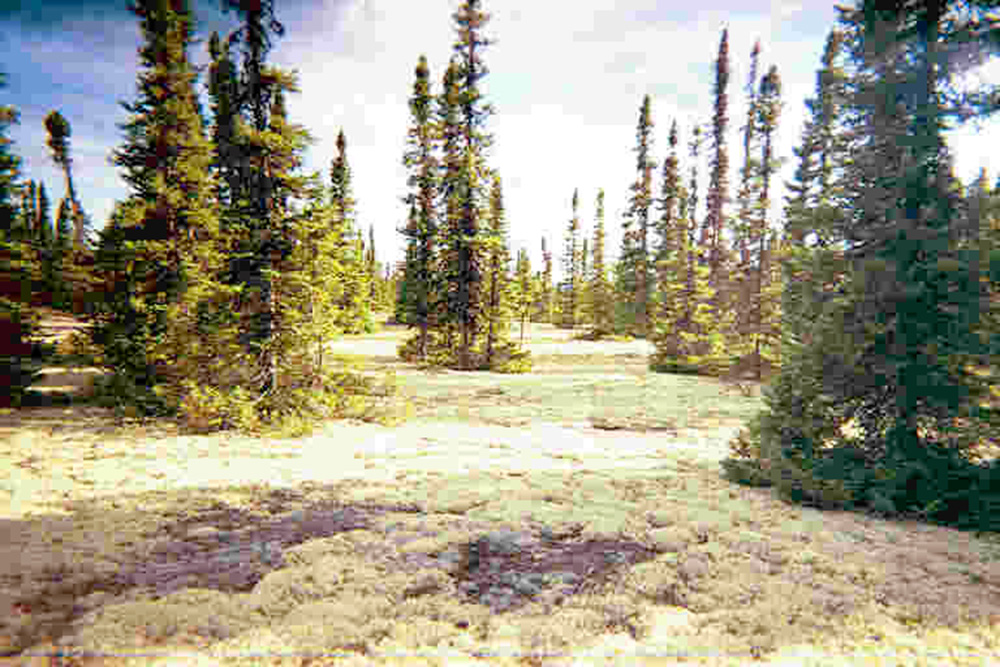Today I spent three hours under the earth, not even dead, and walked inside it for four miles; still I saw only a tiny fraction of the things I shouldn’t have seen.
Since mooching off my relatives in Ontario worked out so well, I decided to extend the theme and visit my aunt and her family here in Kentucky, just across the river from Cincinnati. It was wonderful being a part of civilization, but I got soft — being indoors does that. Kind of like Superman, my powers start to fade if I’m not exposed to the sky. A few days ago I set out for Mammoth Cave, only a couple hundred miles away, but I left late, stopped at the mall, then got turned around on some back roads. I rode an hour down the highway and pulled over to take a nap; when I got up I decided what I really wanted was a root beer float so I bought ice cream and root beer and rode back to Villa Hills. It was pathetic.
I was caught in the gravitational well of the clean bed and the hot shower for a whole week and only left two days ago to finally head for the cave, but it was worth it: spending time with relatives and playing with the kids is at least as important as any trip. Eating their food is just a bonus.
Ohio and Indiana are covered with corn. Most of the fields are brown; staked at their edges are colorful signs with mouth-watering names like Pfister Hybrids 3321, Pioneer 33Y18 Elite, Southern Cross Jude 4.0, Croplan Genetics 6598, and AgriGold A6460. Corn is no longer grown by human beings.
Mammoth Cave has 350 miles of passages that they know about, and the pamphlet estimates there may be twice as many more yet undiscovered. I walked along only a few miles of these but it was still very strange to slip into the earth in one place and come out several miles away (Honey, we’re late — should we take Route 259 or the cave?); it isn’t just a cave, it’s a Way. Much of the tour was through grand corridors 15 feet high and 40 feet wide, gently curved — a pipe under the ground. Other segments were much taller and rougher like riverbed with a flat rock ceiling. We filed for several hundred yards through a subterranean slot canyon 3 feet wide and extravagantly curvaceous, a wildly rippling ribbon of air through stone. We rested and walked, rested and walked, as if we were on an epic journey and had to conserve our strength; I watched for Gollum and kept my hand near Sting (my Leatherman) in case the lights failed.
We weren’t the first. People began exploring the cave 4000 years ago by the light of reed torches, and made it not just a hundred yards or a half mile, but many miles under the ground. That’s staggering bravery, and I can only hope they found that passage to the other side that has so far eluded us.
Far underground, we found hidden things, wonders of the earth: a cafeteria, drinking fountains, restrooms.
Most of the passages we travelled through were dry, if haunted by water. Stalactite and stalagmite free, the mighty network of tunnels was cut by dark children of the Green River millions of years ago and then abandoned for deeper levels where they play still. There were white gypsum growths on the rough walls like flowers, tufts of hair, lichens, as if when rock dreams it dreams of life and then extrudes those dreams through a slow stone alchemy.
At the end we did come to a chamber called the Frozen Niagara which was full of the rock icicles and sheets of flowstone that are formed by slowly dripping, oozing water. Some appeared warm woody brown, some closer to white. Looking up at the ceiling was like looking up into the vanes of a madly twisted mushroom cap. I guess if rock is going to dream it’s not surprising if it dreams small dreams of things barely alive; fungus, for its part, seems nostalgic for stony sleep.
As the ranger said, we are creatures of light. Not only are we solar-powered, but our minds are like shuttered lanterns full of light. We have other senses but sight rules over them so that the world we perceive around us and the copy we keep in our heads are both full of pictures. To us, darkness is just the absence of light, like silence is the absence of sound, a temporary condition. But light in this cave is a little like sound in space — it’s just not one of the features. When we turn on the lights to walk through and look at the cave, what we’re looking at is something we invented; we might as well paint the cave blue from end to end because light is just as foreign and unnatural a pigment. We have to go down in our capsule of light, though, to make some sense of the place or else we could barely even tell that it existed, as the little fish and bugs that live down there would come up to the surface world in dark capsules of smell and sound-perception if they ever undertook that journey.
